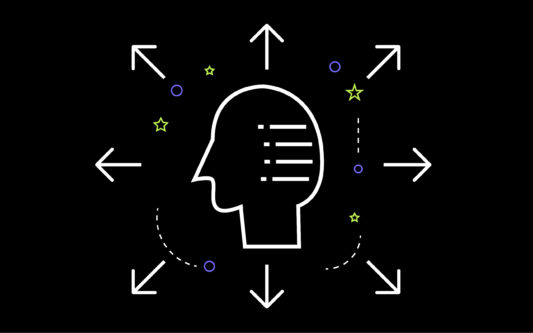Do you have ambitious plans you would like help with?
Please get in touch
Please get in touch
Part 1: Digital Transformation
Covid-19 has triggered a new age for the CMO, reinventing the role and cementing its place at the C-suite table. But as the dust begins to settle, only the CMOs who truly understand and embrace all the fast-shifting factors at play will be able to deliver a future-proof marketing function long-term.
According to recent research, the majority of CMOs have seen their influence increase during the pandemic and over 80% have led more cross-functional collaboration within their companies. Where once CMOs filled a neat gap between sales and marketing, they now have the opportunity to shape entire products and experiences and help set creative and commercial visions, fuelled by their position as some of the most data-savvy people in the company.
Our experience working closely with CMOs and observing how their role has changed over the pandemic has given us incredible insight into their new, emerging set of goals. In this series of three short pieces, we share what we think CMOs today need to be considering to ensure that they achieve these goals, starting with: Digital Transformation.
As the digital age has progressed, the role of marketers as a sales and distribution go-between has given way to whole new paradigms of data analysis, trend and insight forecasting, and direct relationships with consumers for selling. When the pandemic hit, this data-centric expertise came into its own as companies rapidly tried to understand new consumer behaviours and expectations. In many cases, the role of CMO evolved from leading the direction of communications channels alone to providing data-driven insights to help inform wider business, product and sales strategies.
This is only the beginning. McKinsey have reported that digital adoption in both consumer and business audiences has leapt forward 5 years as a result of the pandemic. Being closest to consumer data and evolving digital platforms gives CMOs a critical perspective when it comes to leading companies through this period of rapid digital transformation. Brand is experience and experience is brand. One constantly shapes and informs the other and knowing how to shift the focus from physical to digital and evolve products and services in the right direction and at pace is paramount for CMOs, who are ultimately commercial and cultural champions.
Today’s leading CMOs will need an understanding of how to use their data and analytics expertise to help steer strategy beyond marketing alone and across multiple aspects of the business to deliver the digital transformation we are seeing.

Part 2: Societal transformation
Looking at the Forbes top ranking CMOs in 2020, there was a clear call to action for CMOs to be agents of change and transformation, not only from a digital perspective as we covered in part 1, but from a societal point of view too.
Speakers at a recent virtual round table at Cannes Lions highlighted that marketing teams are often called on by other departments to advise on corporate responsibility work and diversity and inclusion programmes. While this area might not traditionally be a core part of a CMO’s remit, their role in understanding data, together with driving communications channels, has made them critical in driving change in this area - both internally and externally - over the last couple of years, especially during the heightened pressure of the pandemic.
But there is a deeper problem to address. Despite the number of female CMOs at 100 of the most-advertised US brands increasing to 47% last year (up from 36% in 2018), the number of racially and ethnically diverse CMOs fell from 14% in 2019 to 13% in 2020 and ethnic minorities accounted for only 12% of incoming CMOs in 2020, down from 19% in 2019.
Today’s CMOs need to use their position to promote diversity and inclusion externally in away that rings true to their brand purpose, as well as in their internal operations to ensure that diverse marketing talent is nurtured for the future.
For example, Sara Spivey, CMO of cloud-based customer engagement platform Braze, went public about her decision to re-distribute funding allocated for Facebook advertising to other areas, commenting in a tweet, “I won’t fund an org that fails to act against divisiveness and hate, hiding behind ‘freedom of speech.’ Fellow marketers, join me.”
Meanwhile, Häagen-Dazs’ recent multichannel #ThatsDazs campaign, led by CMO Elizabell Marquez, linked the brand’s roots as a company founded by immigrants to the critical need for brands to evolve to reflect diversity in today’s world. It was backed up by a $1.5 million pledge to support a diverse group of creators over the next 3 years.

Part 3: Internal transformation
As well as having a responsibility to inspire and lead Societal Transformation, which we discussed in Part 2, tomorrow’s CMO also needs to be an agent of change internally too, helping steer the brand as it adapts to post-Covid realities.
Consumer experience now equates to brand loyalty. This sparked the ‘Iterative Design’ era where consumers provide immediate feedback on products and services, shifting how products are developed and released. To keep up with consumer input, CMOs have had to quickly develop new ways of working in multi-disciplinary teams because this new age of instant feedback requires a symbiotic relationship between product, experience, and brand.
The pandemic has accelerated and compounded this.
While in past downturns businesses had the luxury of moving slowly and scoping out options, now companies have to move quickly with the times by planning multiple scenarios at speed as they change in front of their eyes, exacerbated by the overnight loss of face-to-face contact with consumers. Smart CMOs will have capitalised on this opportunity to gather more focused data and boost screen-time engagement where appropriate, in turn improving user experience.
At the same time, the pandemic changed our ways of working forever. The need to be flexible and fluid was no longer an option. It became a necessity and a reality. Office spaces are now dedicated to activities, not people.
As a result, the most successful CMOs today have become experts in how to quickly integrate instant consumer feedback and analytics with diverse thinking, skillsets and insights from multiple teams. They have had to become the ever-present ‘consumer voice’ internally that keeps product releases and sales strategies on track, making them a critical part of the C-suite.
Alicia Tillman, CMO of software giant SAP until earlier this year, helped lead a swift response to the changing needs of business customers during Covid. The made their SAP Ariba product – a digital marketplace - free, created a new tool to monitor the new reality of international travel as well as Work Pulse – a survey tool to help manage the needs of employees working from home.
There are other success stories too. Over the last couple of years I’ve worked with Hiroko Ohmura at Yamaha Music Corp who showed me that CMOs could be so much more than sales liaisons.
While Hiroko is an engineer and has worked on the creation of fantastically innovative Yamaha products, her vision stretched far beyond that. She found new ways to bring a huge organisation closer by unifying geographies and divisions with a single promise to consumers, influencing not only their marketing but challenging products and distribution too. At the same time, her teams are finding inspiring ways to react dynamically to the challenges posed by the pandemic, from tactical adjustments posed by the availability or relevance of products, to the more predicting what consumers’ needs and behaviours will look like once restrictions are lifted.
Our experience of working with CMOs like Hiroko and seeing how they have adapted to a new set of demands enables us to continue working closely with major brands in helping them achieve unprecedented levels of transformation and to supercharge their growth.
